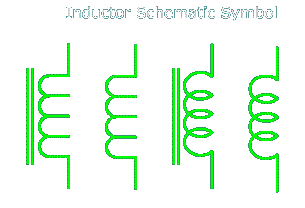
|
| Email Home Page |
|
|

|
| Email Home Page |
|
|
|
The unit of measure is the 'henry', but since that is such a large value of inductance, the value is usually stated in millihenries or microhenries. One henry is equal to one thousand millihenries or one million microhenries. This is the schematic symbol for an inductor.

Examples:
 This is an inductor that you might find in a low power circuit. This is a 1000 microhenry inductor. These are typically used to remove high frequency noise to prevent the circuit from malfunctioning. This is a ferrite core inductor. The ferrite core helps increase the value without requiring more wire.
 The type of inductor below is typically found in passive crossover networks. Again, the core helps increase the inductance without increasing the number of turns. This inductor (referred to as an iron core inductor) is typically considered to be the lowest quality (easiest to drive to its limits) but when properly selected, they work well.
 |

|

|
|

|